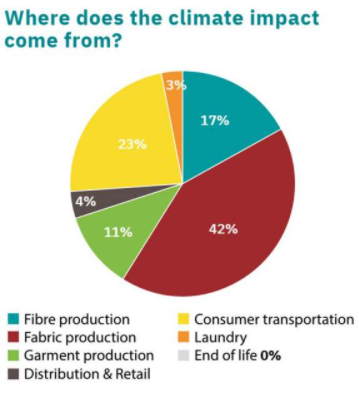If the production of one pair of jeans requires almost 4,000 litres of water to grow the cotton and produce and treat the material, then the cost of the entire clothing industry must be enormous, both in water consumption and land use.

Up to 90 percent of all clothing ends up being incinerated while it is still wearable.
Synthetic fibres are more problematic.
Every year, half a million tons of plastic microfibres from synthetic clothing (the same as 50 billion plastic bottles) enter the ocean and spread throughout the marine food chain, causing damage and long lasting pollution throughout the ecosystem.
We can play our part by changing the way we buy, use and re-use our clothes.

As well as thinking about whether you actually need the new clothes you have seen, consider also whether you can buy them second hand. Recycling clothes you don’t need will prevent them from being incinerated as waste.
Natural fibres are not made with plastics so will not end up in the oceans as plastic pollution.
The Ellen MacArthur foundation has launched a campaign to make fashion ‘circular’. You can learn more about this work here.
Raw materials
Production
Distribution
Consumption
Disposal



